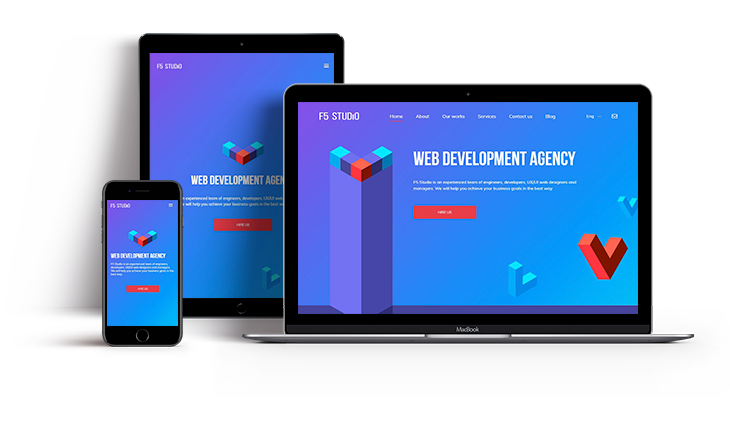In 2024, building a website requires staying up to date with emerging trends and technologies while steering clear of typical pitfalls that could impair SEO and user experience. For a website to draw in visitors, hold their interest, and eventually turn them into frequent visitors or buyers, it must be well-designed. In order to make sure your website is efficient and competitive, here are 8 website design mistakes you should avoid in 2024.
Ignoring the importance of mobile optimization

Mobile optimization will be required in 2024 and will no longer be an option. Because more and more people are visiting websites on their smartphones and tablets, mobile-friendly design is essential. Designing a website mainly for desktop use and ignoring how it works on mobile devices is a common mistake.
Why it is important
Because of its mobile-first indexing policy, Google primarily indexes and ranks content based on its mobile version. Lower rankings, a bad user experience, and high bounce rates can result from a website that is not mobile-optimized.
Use responsive design to make sure your website adapts to various screen sizes and devices on its own. Make sure your website functions properly on all platforms by testing it on a range of devices.
Slow loading speeds

Speed of a website is important for both SEO and user experience. Users may become irate and increase their bounce rate as a result of slow loading times. Website visitors expect websites to load quickly in this fast-paced digital world.
Why it is important
Both desktop and mobile search rankings are influenced by page speed, as verified by Google. User satisfaction and search engine rankings can both be greatly impacted by a slow website.
To increase loading speeds, use a Content Delivery Network (CDN), optimize images, and take advantage of browser caching. You can find and address speed issues on your website with the use of tools like Google PageSpeed Insights.
Poor navigation

Maintaining visitors on your website and assisting them in finding the information they require requires user-friendly navigation. Users may become irritated with intricate or confusing navigation and depart from your website.
Why it is important
Well-designed navigation improves user experience, lowers bounce rates, and increases the likelihood that site visitors will become buyers. Additionally, it makes it easier for search engines to index and crawl your website.
Make navigation easy to understand and simple. Make sure that menu items have clear labels, and arrange content logically. Add a search bar to make it easier for users to locate specific information quickly.
Ignoring accessibility

Making your website accessible guarantees that users with disabilities can access and utilize it as well. Ignoring accessibility can reduce the size of your audience and possibly result in legal problems.
Why it is important
Everyone can enjoy a better user experience and an inclusive website when it is accessible. Furthermore, in many places, accessibility is becoming a requirement under the law.
To make your website accessible, adhere to the Web Content Accessibility Guidelines (WCAG). This entails giving text alternatives for non-text content, guaranteeing keyboard navigation, and employing alt text for images.
Overcomplicating design

While creating a visually appealing website is important, adding too many extraneous elements to the design can make it less usable. Visitors may become overwhelmed and find it challenging to navigate a cluttered design.
Why it is important
Keeping things simple makes it easier for users to find what they're looking for, which improves user experience. It also contributes to the site loading effectively and swiftly.
Pay attention to a simple, minimalistic layout that draws attention to important text and calls to action. Make good use of whitespace to establish a balanced layout and direct users' attention to key areas.
Neglecting SEO best practices

For your website to receive natural traffic, SEO is essential. It may become more difficult for potential clients to find you if search engine optimization is neglected during the design process.
Why it is important
Effective SEO techniques raise your website's position on search engine results pages (SERPs), which raises the likelihood that users will visit and stay on it.
Design your website with SEO best practices in mind. This entails producing excellent, pertinent content, making use of pertinent keywords, optimizing meta tags, and guaranteeing quick loading times. Effective on-page SEO management can be aided by programs such as Yoast SEO.
Overlooking analytics

It's difficult to comprehend how users interact with your website and pinpoint areas for development without the right analytics. A common error made by businesses is to ignore analytics when they are designing a project.
Why it is important
Analytics offer insightful information about user behavior, site performance, and the efficiency of your marketing campaigns. This information is essential for optimizing your website and making well-informed decisions.
One possible solution is to incorporate tools such as Google Analytics and Google Search Console right away. To better understand and improve the user experience, keep a close eye on important metrics like bounce rates, session duration, and conversion rates.
Failing to update content regularly

Outdated content can drive away readers and hurt your SEO efforts. If you don't regularly update the content on your website, it may come across as less authoritative and neglected.
Why it is important
Relevant, up-to-date content keeps readers interested and entices them to come back. Additionally, it tells search engines that your website is worthwhile and active, which can raise rankings.
Create a content strategy comprising fresh materials, blog entries, and frequent updates. For simple content management and updating, use a content management system (CMS) such as WordPress. To keep your website interesting and dynamic, think about adding user-generated content and comments.

By avoiding these typical web design errors, you can greatly increase user experience, boost SEO results, and increase the overall efficacy of your website. These best practices will help you create a visually appealing, functional, accessible, and user-friendly website in 2024 when you build or update it. Your website will stand out in a crowded digital market if you prioritize mobile optimization, loading speed, accessibility, simplicity, SEO, analytics, and content updates.
It's critical to keep up with the most recent developments and industry best practices in website design as technology advances. Review and update your website often to add new features and betterments that will make the user experience better. By consistently improving your website, you can keep up a powerful online presence and accomplish your business goals.


